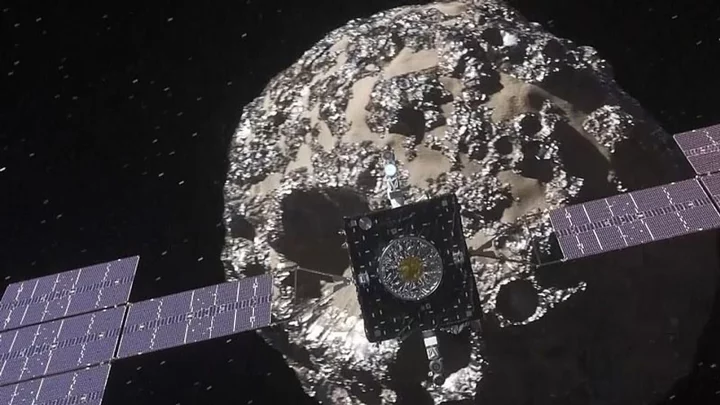NASA has lifted the lid on its first findings about the Bennu sample, one of the "most hazardous known asteroids".
The highly-anticipated sample from the OSIRIS-REx’s mission took seven years to complete and finally made a safe landing on Sunday 24 September. Scientists audibly gasped upon opening the capsule.
They kept details to a minimum and maintained a slow pace in progress for "good reason," as they received more material than expected.
"The abundance of material found when the science canister lid was removed earlier this week has meant that the process of disassembling the TAGSAM (Touch-and-Go Sample Acquisition Mechanism) head – which holds the bulk of material from the asteroid – is off to a methodical start," they said a the time.
That was until now...
On Wednesday 11 October, the space agency shared details for the first time from NASA experts and the University of Arizona.
NASA said there were signs of water and carbon on the sample through hydrated clay minerals that contain carbon.
"At nearly 5% carbon by weight, carbon being the central element of life, far exceeding our goal of 60g, this is the biggest carbon-rich asteroid sample ever returned to earth," Administrator Bill Nelson said, adding that it was "exactly the kind of material that we wanted to find."
He went on to suggest that "they are going to help us determine the origin of elements that could have led to life" and provide a greater understanding of how to protect Earth from asteroids.
Scientists also revealed that the sample contained space dust from 4.5-billion-year-old asteroid Bennu.
NASA showed the audience the sample on a video to protect the sample and to prevent contamination.
Speaking about working through a glove box to analyse the sample, Francis McCubbin, astronomical curator at NASA's Johnson Space Centre said: "[It is] "hard, challenging work, and it does not go quickly, but we need to do this right".
The samples will be preserved so that "scientists that aren't even born yet are going to have the opportunity to answer questions about our universe with these samples using technology that has not even been invented."
Sign up for our free Indy100 weekly newsletter
Have your say in our news democracy. Click the upvote icon at the top of the page to help raise this article through the indy100 rankings.









